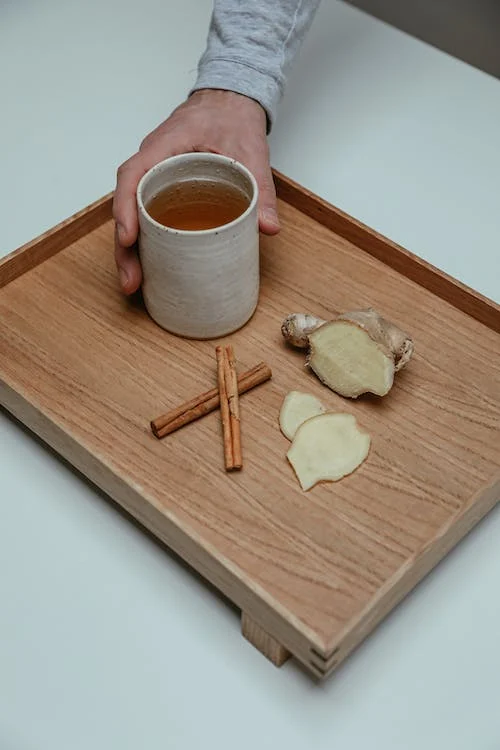Two species of sage are commonly used in food and for homeopathic medicine: common sage (Salvia officinalis) and Spanish sage (Salvia lavandulaefolia). It is an evergreen member of the mint family of plants. Usage of sage for a variety of things has been popular for thousands of years.
Health Benefits and Side Effects
Sage has been used for a long time to help with a variety of medical issues, including:
- Digestive problems such as appetite loss, bloating, diarrhea, gas, heartburn, and stomach upset,
- Depression,
- Diabetes,
- High cholesterol,
- Excess saliva and perspiration,
- Dental issues, including cavity prevention,
- Brain blood flow,
- Memory,
- Pain reduction (after surgery),
- Alzheimer’s,
- Cancer prevention,
- Menstrual pain,
- Reduction of excess milk during breastfeeding,
- Reduction of hot flashes during menopause for women and prostate cancer treatment for men,
- Topically for cold sores and sore or swollen mouth, throat, tongue, nasal passages, and tonsils, and to treat sunburn,
- Inhaled for asthma,
- Aromatherapy for brain performance and memory improvement.
Sage essential oil may also be used to achieve these effects, by ingesting or inhaling.
If a person is allergic to plants in the mint family, they may also have a reaction to sage. It has a chemical called thujone that, if taken in excess, can cause liver damage, seizures, and damage to the nervous system; this is unlikely to be an issue unless sage is taken in large amounts for an extended period of time. It is better to avoid using it as a supplement when pregnant or nursing, but as a food flavor additive, it is safe.
Food and Nutrition
1 teaspoon of sage (about .7g) provides about 2 calories, a tiny bit of protein, .4g carbohydrates, .1g fat, and vitamins A, B6, C, E, and K, iron, calcium, and manganese, magnesium, zinc, and copper. It also is rich in antioxidants – over 160 polyphenols.
Sage can be used fresh or dried; in either case, it is wise to start with a little because it has a strong flavor. More can be added as needed, but it is difficult to remove it if too much is added at first. It goes well with fatty recipes and is likely to aid in the digestion of such a meal.
Some of the foods that work well with sage include apple, beans, cheese, chicken, duck, eggplant, eggs, fish, goose, liver, peas, pesto, pork, ravioli, roasts, sausage, stuffing, tomatoes, tuna, turkey, and veal. Many poultry recipes include sage as one of the primary seasonings. It is often combined with other herbs, including parsley, rosemary, thyme, marjoram, and oregano, and it goes well with garlic and onion.
Sage essential oils should not be used in cooking; they are much too strong.
Sage makes a very nice tea. It is soothing to a sore throat and offers health benefits at the same time.
Other Uses
It is believed that sage’s chemical compounds and antioxidants can aid in skin care, offering anti-aging and protection to skin cells when applied topically. It can tone oily skin and regulate oil production. It has an antibacterial effect to help skin infections to heal and to treat psoriasis and eczema.
A mix of sage, rosemary, and peppermint oils in equal parts (around 4 drops), added to a tablespoon of olive oil and massaged into the scalp twice a day, has been shown to treat male pattern baldness and combat the hair loss in some men.
Sage tea is a good treatment for hair to give it shine and help prevent dandruff. This may also darken hair if used as a final rinse.
A setting lotion can be made to help style hair by mixing equal amounts of fresh sage and rosemary, then boiling them in a few ounces of water then simmering for a few minutes. Allow to sit for about three hours, then rub into hair before styling.
Growing
Sage is an evergreen perennial which enjoys sandy soil that is alkaline and has good amounts of sunlight. It can get up to almost 30 inches tall and has woody stems that branch. The leaves have a pattern that is pebbly and tend to be grayish green with a soft surface. It blooms in the summer and its flowers grow in bunches that bees enjoy.
Plant in full sun, in well-draining soil. Sage does not like excess moisture in the soil. It is easiest to begin with young plants; leave two feet between plants. If starting from seed is preferred, start them two weeks before the last frost. They can be sown directly into the ground. The soil should be around 60-70 degrees Fahrenheit when planting, for best results. It can be planted by rosemary, carrots, or cabbage, but leave a lot of space between sage and cucumbers.
Only water regularly until they are well established. Prune in the spring, removing heavy, woody stems.
Leaves can be gathered as needed, year-round. Choose leaves that are clean and not wilted, with no sign of mold. They are best just before the plant flowers. Sage leaves can also be harvested and refrigerated in an air-tight container for use at a later date or dried to crush or make into powder for rubs and spice mixes.

